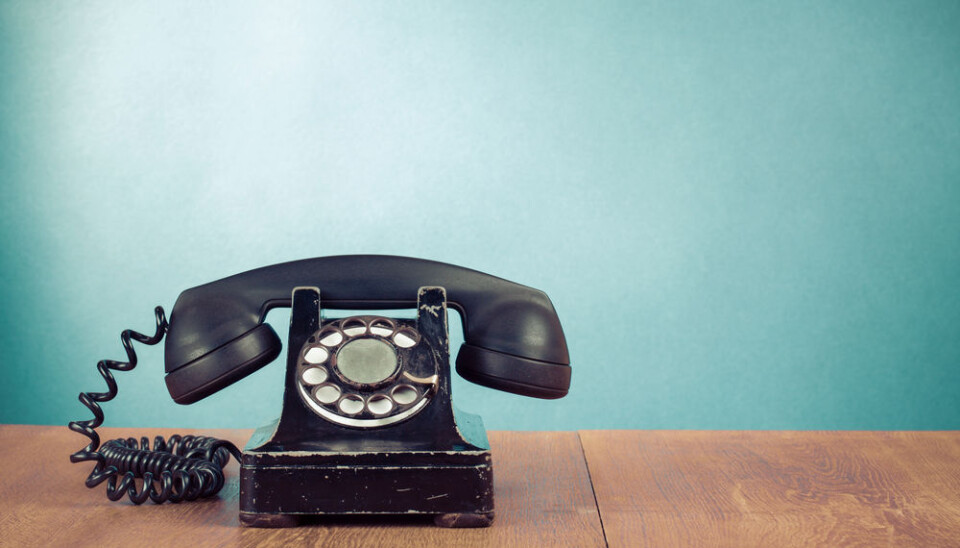
Your Facebook habits can be predicted by your grandmother’s phone use
Telephone culture from the 1950s can explain why and how we use Facebook and other modern social media today.
Why are some people so preoccupied with staring at their phone? Does the world really need to hear about your problems via Facebook?
Many of the older generation find today’s phone and media driven society difficult to understand, and there is nothing new in that--the role and function of the phone has changed so many times since our parents’ and grandparents’ days.
Postdoc Mette Simonsen Abildgaard from Aalborg University in Denmark has been granted funding from the Danish Council for Independent Research to dig into the history of telephone use between 1950 and 2000.
"Phones are one of the key technologies in our daily lives. We use them constantly,” says Abildgaard.
“In the past, using a telephone was a serious matter and it was only used for short messages--chitchat was prohibited. So it’s exciting to see when and how the changes happened," she says.
Technologies are defined by how they are used
Abildgaard believes that technology is not just a collection of technical gadgets that are invented and thrown out onto the market. Technology is created due to the way we choose to spend time on it.
"We have [collectively] helped define what the phone is, in the same way that we have defined what is on the Internet. That will be the focus of this project," says Abildgaard.
Parallel to her research on the phone's history, Abildgaard aims to understand and to predict our responses to new technological inventions. She will find out how telephone use changed when new media became available.
Phone Habits were changing when grandma was young
The researcher hopes her project will get people chatting about what role the telephone has played in their family life or ‘what life was like when mom was a kid’. Abildgaard says she has had some fun conversations with her own family on precisely this topic.
"We have talked to my grandmother about how she used to have to dial a telephone exchange. This has given rise to a reflection on how the world has changed. And also about how it has changed in relation to some of the technologies that are important in everyday life," she says.
According to Abildgaard, knowledge of your grandparent's telephone habits can say a lot about how you use technology today. Most likely because they raised your parents, and their habits were passed down the line to you.
On fieldwork with questions about phones
Abildgaard will hit the streets to ask people how their access to telephones, and use of them, has changed across generations.
"I want to hear about the role that telephones have played in people's lives. How many phones did they have in their childhood home, what were they used for, and how this changed as they got older," she says.
She will also use other sources of information to develop as accurate a picture as possible about historical phone use in everyday life.
She’ll be conducting empirical studies and collecting other sources of information from various archives, including the Post and Telecommunications Museum in Copenhagen, Denmark.
Museum objects are a key part of the research
"As a cultural institution, we’re interested in knowing as much as possible about how the telephone has been used,” says Martin Johansen, chief of research at the Post and Telecommunications Museum.
“The question of how it has changed ordinary people’s everyday lives is particularly exciting," says Johansen.
"So far, the story of Danish telephony has only been described up until 1920. We would really like to extend our knowledge into the modern era of telephone culture. So for us, this project is absolutely essential," he says.
----------------
Read the Danish version of this story on Videnskab.dk
Translated by: Catherine Jex
External links
- Mette Simonsen Abildgaard's project, CoSound, at the University of Copenhagen
- Tecno-Anthropology Research Group, Aalborg University










